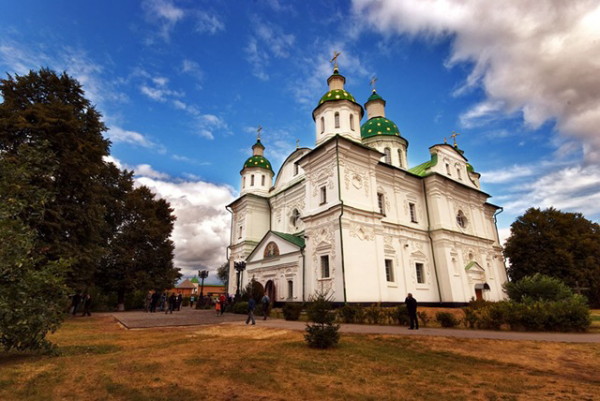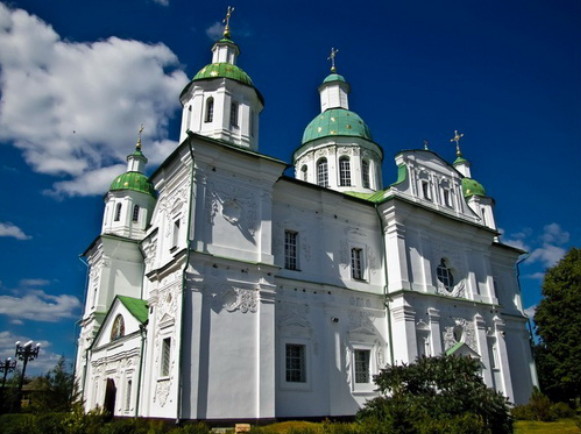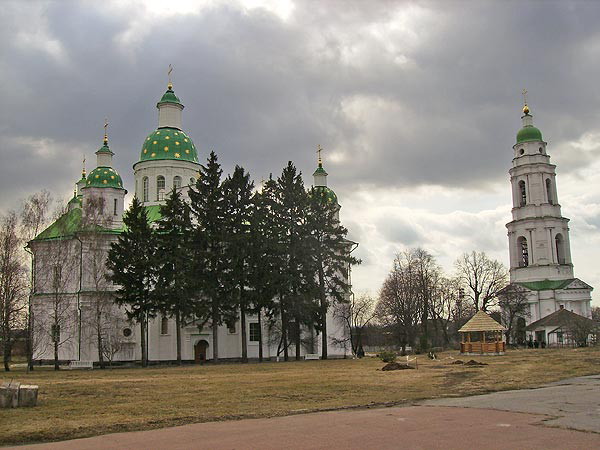Mhar Transfiguration Monastery
Mhar Transfiguration Monastery [Мгарський Спасо-Преображенський монастир; Mharskyi Spaso-Preobrazhenskyi monastyr]. A men's monastery located in Mhar, a village on the Sula River near Lubny, in the Poltava region. It was founded by Isaia Kopynsky in 1619 with the financial support of Princess Raina Vyshnevetska. Later it enjoyed the patronage of hetmans Bohdan Khmelnytsky, Ivan Mazepa, and others and became one of the wealthiest monasteries in Left-Bank Ukraine. The monastery was also active in political affairs. In the 1720s to 1730s, Hegumen V. Zahorovsky advocated the unification of Left- and Right-Bank Ukraine under one hetman and opposed Muscovite rule in Ukraine; for this he was arrested in 1733 and taken to Muscovy. In 1737–48 the hegumen was Yoasaf Horlenko. There is evidence that the monks of the monastery supported I. Mazepa's revolt against Tsar Peter I of Russia.
The central Transfiguration Cathedral was designed by Johann Baptist and built in 1682–94 with the assistance of M. Tomashevsky and A. Pyriatynsky. The design combined elements of the traditional Ukrainian cruciform three-nave shrine and the Western European basilica, and stands as one of the finest examples of the Ukrainian baroque. Its construction was funded by Hetmans Ivan Samoilovych and Ivan Mazepa. It was rebuilt and expanded in the mid-18th century, and two of the original seven cupolas were removed. A unique feature is its stucco decor. The monastery complex included the archimandrite's residence (1786), the monks' cells (which have not survived), a baroque bell tower (completed in 1844), a hospice (second half of the 19th century), and the Annunciation Church (built in a pseudo-Byzantine style in 1804). Saint Athanasius Patellarius, a former Patriarch of Constantinople who died in Mhar, is buried in the monastery. In 1908 the Mhar monastery housed 61 monks and novices. It was closed down in 1926 by the Soviet authorities, and the building and grounds were made into a state architectural preserve. The monastery was reopened in 1993.
[This article was updated in 2013.]

.jpg)
.jpg)


